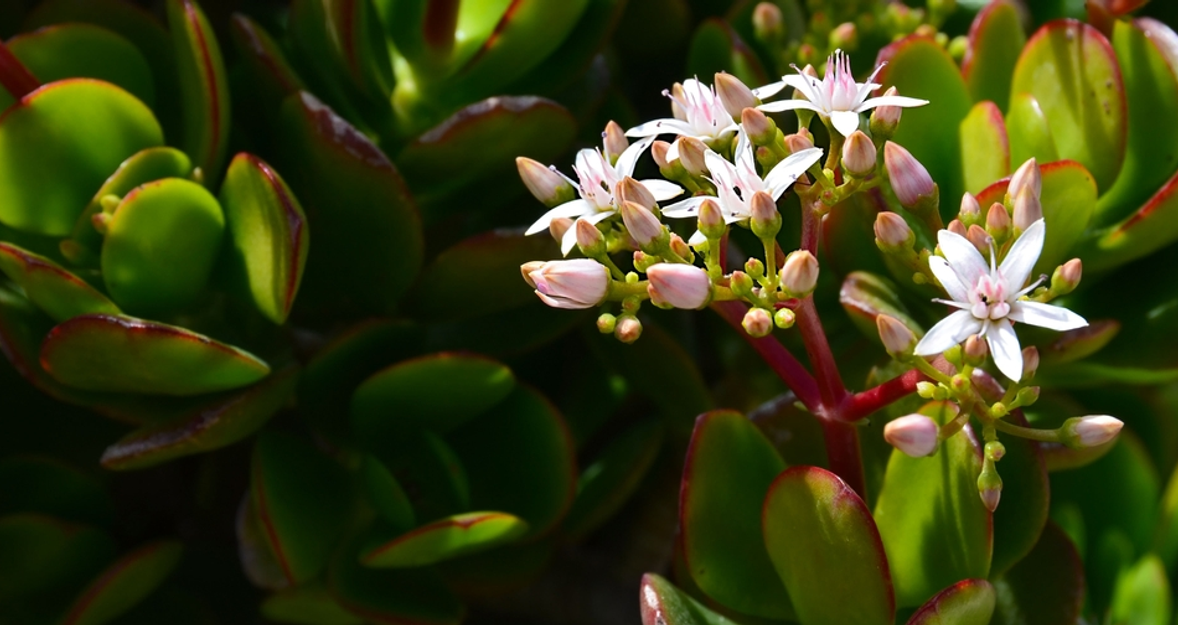Plant Photography Tips
Last Updated on January 03, 2025

Are you interested in botanical photography? Then you've come to the right place! Today on our blog, we reveal the secrets of taking pictures of plants in the best way.
Have you ever found yourself mesmerized by the intricate details of a blooming flower or the striking patterns of leaves? Taking pictures of plants is a delicate art that combines patience, observation, and creativity. A photographer must learn to see the subtle dance of lighflower photographyt on the petals and leaves and capture the essence of growth and life that plants represent!
Today, we will walk together through the vibrant world of plant photography, where every shot can become a masterpiece. Using our tips, you will learn not only to take photos but also to communicate with the natural world in a way that truly reflects its beauty.
So grab your camera, step into your garden or local park, and get ready to see the green world through a whole new lens!
Mastering the Camera for Plant Photography
 Delving into botanical photography requires more than just a keen eye for nature; it demands a mastery of your camera to capture the essence of your plant subjects in stunning detail and clarity. Understanding and adjusting basic camera settings is pivotal in achieving this!
Delving into botanical photography requires more than just a keen eye for nature; it demands a mastery of your camera to capture the essence of your plant subjects in stunning detail and clarity. Understanding and adjusting basic camera settings is pivotal in achieving this!
Adjusting Camera Settings
- Aperture (f-stop): Aim for a narrower aperture, around f/8 to f/16. This range typically offers a deeper depth of field, keeping more of the plant in crisp focus and highlighting details like the texture of a leaf or the delicate structure of a flower.
- Shutter Speed: To counteract any movement, such as a gentle breeze swaying the plant, opt for a faster shutter speed. A speed of 1/125th of a second or faster can freeze motion, ensuring sharpness.
- ISO: Keeping the ISO low, around 100-400, is advisable to minimize digital noise and maintain the purity of your image's colors and details.
Framing and Angles for Engaging Plant Photoshoot
Equally important in botanical photography is the way you frame your subjects and the angles you choose. These not only define the aesthetics of your photo but also the story it tells.
- Experiment with Perspectives: Don’t hesitate to change your physical position. Shooting from below, aiming upwards can give a majestic feel to a towering tree, while a close-up from above can reveal the intricate patterns of a flower.
- Rule of Thirds: Use this classic composition technique as a guideline. Place key elements of the plant at the intersections of the grid lines for a balanced and pleasing composition.
- Play with Symmetry and Patterns: Plants often have natural symmetries and patterns. Aligning these elements in your frame can create visually striking images.
By combining these technical and creative aspects, you're well-equipped to create vivid, memorable images in your botanical photography journey. Each setting and angle offers a new way to view the beauty of plants, transforming your photographs into captivating botanical art!
Capture Every Detail with AI-Powered Focus Stacking
Discover it NowChoosing and Understanding Your Plant Subject
When you set out on a plant photoshoot, the journey begins with selecting the right subject. This choice is crucial and can dramatically influence the outcome of your photos. Imagine finding a plant that stands out due to its unique textures, patterns, or vibrant colors. Such plants naturally draw the eye and create a focal point in your photography. It's also important to consider the seasons, as each brings its own special flair. Spring's blossoms, summer's lush greens, the fiery palette of autumn leaves, and even winter's stark beauty provide varied backdrops for your subject.
Garden Photography Ideas
 Garden photography is a great way to combine your love of nature with your creativity. Use natural lighting and interesting compositional techniques to make your photos look vibrant and appealing. Shooting early in the morning or during the golden hour will help to add a soft and warm atmosphere to your shots.
Garden photography is a great way to combine your love of nature with your creativity. Use natural lighting and interesting compositional techniques to make your photos look vibrant and appealing. Shooting early in the morning or during the golden hour will help to add a soft and warm atmosphere to your shots.
Emphasize small details by experimenting with close-ups of flowers, insects, or plants. Shooting from below or different angles often opens up unique angles. Use natural frames and lines that frame or lead to the main subject for better depth, such as branches or leaves.
To make your garden photos look even more professional work with the image's contrast. In post-processing, the photo contrast editor can emphasize bright coldness and add volume to natural textures. The contrast makes plants, flowers, and shadows more expressive, creating spectacular and deep shots.
Don't forget about seasonality — each season brings a unique beauty to the garden, so shoot in spring for bright colors, in fall for warm hues, and in winter for the magic of frost and snow on the plants.
Close-Up Plant Photography
 Taking close-up plants shoots is a way to reveal the hidden beauty of nature. Close-up photography focuses on textures, details, and shapes that are usually invisible to the naked eye. This approach works for both gardens and houseplants.
Taking close-up plants shoots is a way to reveal the hidden beauty of nature. Close-up photography focuses on textures, details, and shapes that are usually invisible to the naked eye. This approach works for both gardens and houseplants.
Houseplant photography is a great option if you want to experiment with light and composition without leaving your home. Soft natural light near a window is your best friend in such an activity. You also can add contrast with an artificial light source. Macro photography is essential for emphasizing small details like leaf veins or water droplets.
To improve the quality of your shots, follow these basic macro photography tips:
- Use a tripod when shooting at close distances. It helps to avoid camera shake.
- Choose the right focus point to highlight key elements, such as a flower's center or a stem's texture.
- Play with the bokeh effect to emphasize the main subject.
For perfect close-up shots of plants, remember to compose your shot correctly. Use the rule of thirds to make the shot interesting, and don't be afraid to fill the entire frame with your subject. It helps to emphasize the unique shapes of the plants and their natural harmony.
Practice not only on garden plants but also on indoor plants, experimenting with different textures and lighting. The world of plants is boundless in its beauty, and close-ups allow you to peek into its most secret corners.
The Best Lighting for Plant Photos
 Once you've chosen your plant, understanding the role of lighting becomes your next crucial step. Natural light, particularly on an overcast day, can be your greatest ally. It offers a soft, diffused quality that flatters the natural details of plants, avoiding the harsh shadows or overexposed areas that direct sunlight can create. Another magical time for plant photography is during the golden hours of sunrise and sunset. The light during these times can bathe your subject in a warm glow, accentuating textures and colors in a way that feels almost ethereal!
Once you've chosen your plant, understanding the role of lighting becomes your next crucial step. Natural light, particularly on an overcast day, can be your greatest ally. It offers a soft, diffused quality that flatters the natural details of plants, avoiding the harsh shadows or overexposed areas that direct sunlight can create. Another magical time for plant photography is during the golden hours of sunrise and sunset. The light during these times can bathe your subject in a warm glow, accentuating textures and colors in a way that feels almost ethereal!
But it's not just about the softness or warmth of the light; it's also about the drama it can bring. The interplay of light and shadow during the early morning or late afternoon can add depth and intrigue to your photos, highlighting the intricate patterns and textures of your plant subject.
Enhancing Your Photos with Creativity
After capturing your plant photos, the real magic happens during post-processing. This is where you can truly make your images stand out with different styles and editing techniques!
For a simple yet effective approach to editing, Luminar Neo is an excellent tool. It's known for its ease of use and powerful AI-driven features, making it a go-to choice for enhancing botanical photography. The Supercontrast AI allows you to fine-tune the contrast in your images, adding depth and clarity to your plant photos. Then there's an AI image sharpener perfect for bringing out the fine details in your photos, making every leaf and petal pop.
But that's just the start. Luminar Neo also includes Enhance AI for quick light and color adjustments, Relight AI to adjust lighting in specific areas, and Skin AI for portraits with plants, ensuring your subject looks as natural as possible. Structure AI brings out textures, and Sky AI can even replace dull skies in the background with more dramatic ones, adding a whole new dimension to your photos.
Bottom Line
Plant photography is more than just a hobby; it’s a journey into the heart of nature’s art. Mastering the basics of capturing the natural beauty of plants starts with choosing your subject, understanding lighting, and using the right camera settings. Every leaf and petal can come to life through your lens and tell its unique story. Check out our previous post on flower photography for tips and tricks to help you capture the delicate beauty of flowers in a whole new light.
Use Luminar Neo to quickly and easily transform your photos from simple snapshots into stunning visual stories with modern tools. And let every edit highlight the unique character of your plant subjects!






